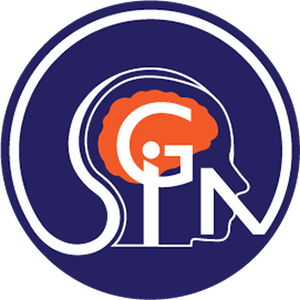 More than 85 neuroradiologists, neurosurgeons, neurologists, oncologists, and scientific researchers attended the 2nd meeting of the Society for Image-guided Neurointerventions (SIGN) held June 10-11 in Baltimore, Maryland. Co-sponsored by the Children’s Brain Tumour Drug Delivery Consortium, the conference included daily live webinars covering clinical perspectives on drug delivery to the brain and technological advances along with its general sessions.
More than 85 neuroradiologists, neurosurgeons, neurologists, oncologists, and scientific researchers attended the 2nd meeting of the Society for Image-guided Neurointerventions (SIGN) held June 10-11 in Baltimore, Maryland. Co-sponsored by the Children’s Brain Tumour Drug Delivery Consortium, the conference included daily live webinars covering clinical perspectives on drug delivery to the brain and technological advances along with its general sessions.
The meeting program featured eight sections, including one dedicated to focused ultrasound. Graeme Woodworth, MD, from the University of Maryland (UMD), spoke on using focused ultrasound to open the blood-brain barrier (BBB) for drug delivery and described his current clinical trial for patients with glioblastoma.
Tim Meakem, MD, the Foundation’s Chief Medical Officer, attended the conference and said, “This was a great meeting, with a clear focus on novel and innovative ways to address brain issues. It was appropriate to include focused ultrasound in this discussion, and the technology was deemed important enough to have its own section.”
Additionally, preclinical and translational focused ultrasound talks were given by the following:
- Victor Frenkel, PhD (UMD) – “The Paradox of Ultrasound Effects on the Extracellular Space: How Expanding These Regions Can Enhance Both Local and Systemic Delivery”
- Hong Chen, PhD (Washington University of St Louis) – “Image-Guided Focused Ultrasound-Mediated Brain Drug Delivery”
- Costas Arvanitis, PhD (Georgia Institute of Technology) – “Controlled Drug Delivery and Release to Brain Tumors with Focused Ultrasound”
- Raag Airan, MD, PhD (Stanford University Medical Center) – “Targeted Drug Delivery to the Nervous System with Ultrasonic Drug Uncaging”
SIGN is a nonprofit, membership-based organization of scientists, engineers, and clinicians who seek to grow technological capacity within interventional neuroradiology, MRI, PET, neuropharmacology, and artificial intelligence.
